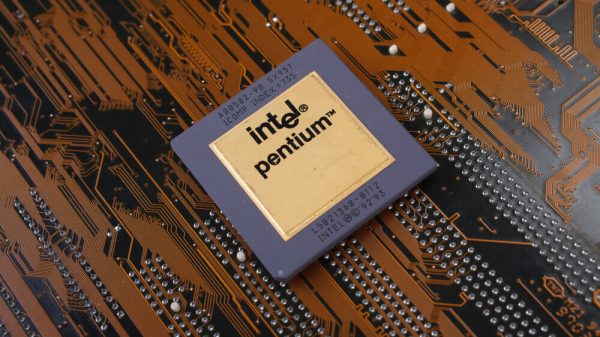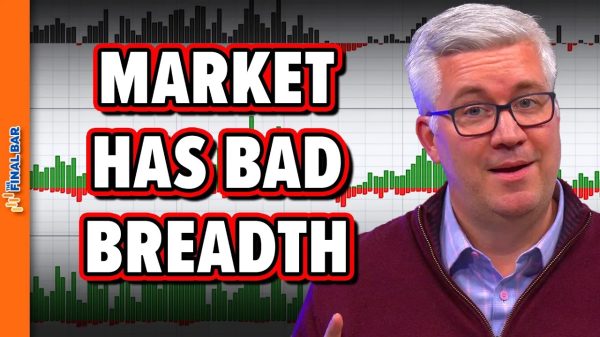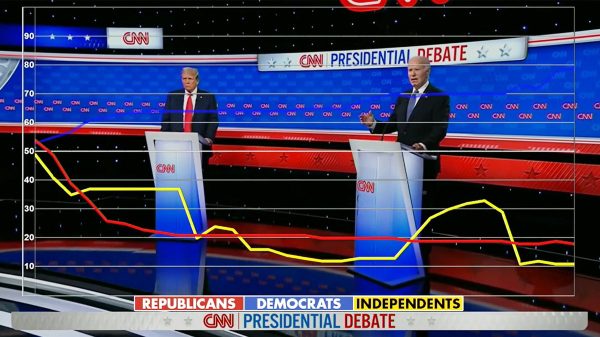IoT Analytics, a leading global provider of market insights and strategic business intelligence for the Internet of Things (IoT), AI, Cloud, Edge, and Industry 4.0, released an update for its IoT Enterprise Spending Dashboard and Tracker, which comprises the end-user spending of IoT markets.
This article highlights the IoT market growth in 2022, forecasts until 2027, and macro trends influencing the forecast.
Key insights:
Overall enterprise IoT spending grew 21.5% in 2022 to $201 billion. IoT Analytics lowered the growth outlook for 2023 to 18.5% (from 24% previously).
Macro trends largely dominate the growth expectancy for an otherwise robust digital transformation phase for enterprises.
Lower-than-expected economic growth and general insecurity in 2022 and 2023 lead to cautious spending on digital transformation and IoT.
Tech layoffs largely spared IoT-focused companies.
Key quote:
Philipp Wegner, Principal Analyst at IoT Analytics, says:
“We lowered our forecast for 2023 but the enterprise IoT market is surprisingly resilient. The number of layoffs of IoT companies is comparably small and healthy order backlogs show sustainable demand.”
IoT Market Update Q1/2023
The enterprise IoT market grew 21.5% to $201 billion in 2022, according to the January 2023 update of IoT Analytics’ Global IoT Enterprise Spending Dashboard. The market grew slightly slower than the 23% forecasted for last year and is expected to grow even slower in 2023. At our last forecast, we expected a faster recovery of the world economy, stronger supply chains, and sustained investment into new technologies to mitigate labor shortage. We ended up with estimated spending growth of 24% for 2023. However, nine months on from our last update, we must lower our forecast for 2023 to only 19%. At this point, IoT Analytics forecasts the IoT market size to grow at a CAGR of 19.4% to $483 billion from 2022 until 2027. Thereby, APAC is expected to outgrow other parts of the world with a CAGR of 22% between 2022 and 2027. North America (20% CAGR) is expected to grow slower than APAC but significantly faster than Europe (16% CAGR) until 2027.
Reasons for a lowered forecast
There are several reasons for the lower-than-expected growth of IoT enterprise spending. In our view, the three primary reasons are:
Lower GDP growth
Sustained inflation
High interest rates
1. Lower GDP growth
One key reason for lower-than-anticipated growth of IoT enterprise spending in 2023 is the environment of low economic growth. In its latest world economic outlook growth projection in January 2023, the IMF expects a real GDP growth of 2.9% in 2023, down from 3.4% in 2022. To put this into context, at the end of January 2022, the IMF expected real GDP to grow by 4.4% in 2022 and 3.8% in 2023.
According to the IMF, the growth of real GPD is going to be lower in 2023 than in 2022 for nearly all major world economies:
APAC: India (+6.1% GDP growth expected for 2023) and China (+5.2%) are the major economies that grow the fastest. China will even grow much faster than in 2022 (+3.0%), being the exception after the end of lockdowns.
Europe: The Euro area (including Germany, France, and Italy) is expected to grow by only 0.7%, while the economy of the United Kingdom is likely to decline by -0.6%.
North America: The United States is expected to grow slower in 2023 (+1.4%) than 2022 (2.0%), and growth is likely to be even slower in 2024 (+1.0%).
2. Sustained inflation
In January 2023, inflation has finally shown a downward trend. However, in most developed economies, inflation is still higher than in the last decade(s). Tech firms, like many businesses, will encounter a workforce seeking higher salaries to cope with the rising cost of living and customers struggling to control expenses. Additionally, operating expenses will escalate with more office staff, travel, and on-site events, resulting in profit stress.
3. High interest rates
In the last year, central banks increased interest rates to fight inflation. The US Federal Reserve increased the federal funds’ target rate from 0.125% at the beginning of 2022 to 4.375% by the end of 2022. To fight inflation, other central banks followed suit (e.g., the European Central Bank [0%–2%] and the Bank of England [0.1%–3.5%]). Higher interest rates have multiple effects as they increase the cost of borrowing capital and put pressure on company margins. Higher interest rates make borrowing more expensive for companies, which can reduce their ability to invest in new projects or technologies.
Spending on digital transformation and new technologies is sidelined amid economic uncertainty
Ultimately, the increased uncertainty trickles down to enterprise investment and into digital transformation and IoT. In their most recent earnings calls, for example, the CEOs of Microsoft and PTC report customers being more cautious with spending on technology. They report most customers stretching the spending rather than cutting it altogether. However, while overall IT spending fell in 2022 and is expected to grow slowly in 2023, spending on enterprise IoT is still expected to grow by 19% in 2023 (according to the January 2023 update of IoT Analytics’ Global IoT Enterprise Spending Dashboard). Large backlogs of automation vendors such as ABB and Rockwell Automation emphasize the healthy demand for digital transformation and enterprise IoT solutions in the long run.
“What happens is typically you’ve got a purchase order, and it needs some level of approval. Maybe last quarter, it needed a higher level of approval, another signature, [and] maybe somebody sat on that signature because they’re saying, ‘Couldn’t we do this next quarter? Couldn’t we start this project a little later?’ […] And generally, it’s not being canceled because companies do need this technology. They’re just delaying a little bit.” – Jim Heppelmann, CEO, PTC, 1 February 2023
“Just as we saw customers accelerate their digital spend during the pandemic, we are now seeing them optimize that spend. Also, organizations are exercising caution given the macroeconomic uncertainty.” – Satya Nadella, CEO, Microsoft, 24 January 2023
“Many clients say that business is slowing and that they are looking to cut costs. Anyone who’s not nervous isn’t paying attention. Customers are saying [that] these are tough times.” – Matthew Prince, CEO, Cloudflare Inc., January 2023 at Davos
Tech layoffs could speed up digital transformation
Many technology companies announced layoffs in recent weeks and months. Microsoft, Amazon, Meta, Cisco, IBM, and SAP are only the most prominent examples. Layoffs.fyi, a tech layoff tracker, registered more than 300 layoff announcements of tech companies, with more than 95,000 employees affected as of early February 2023. However, so far, IoT-related job roles are seldom affected by the layoffs. On the contrary, companies like Schneider Electric and Boeing emphasize the upside as the tech shake-off allows them to hire highly talented and experienced employees. This eases the labor shortage and could speed up digital transformation initiatives.
“A slowdown in hiring in tech has made it easier for other companies to woo workers.” – Annette Clayton, CEO of North American operations, SchneiderElectric SE
“I think it’s going to take probably all of next year before things really do begin to stabilize because we begin to see layoffs in other industries. We definitely feel that in the software world, we’re not having any kind of trouble bringing in the engineering resources that we need, particularly as it relates to software development, because the rest of the industry that competes with us is beginning to soften considerably.” – Dave Calhoun, CEO, Boeing, 26 October 2022
There is also a flipside to tech layoffs in the US: Tech workers that are in the United States with a work visa often only have 60 days to find a new job or have to leave. Tens of thousands of highly skilled and experienced software engineers returning to their home country could potentially lead to faster digital transformation in those countries. So, while layoffs lead to short-term disruption, they might very well be the starting point for a healthy reshuffling in the tech market.
The light at the end of the tunnel: IoT companies are doing well
As discussed above, the global GDP outlook is lowered, and the overall macroeconomic outlook is uncertain. However, IoT enterprise spending is still estimated to grow by 19% in 2023. That is lower than IoT Analytics forecasted before. Despite this, most enterprise IoT-focused companies are staying tight and show a healthy outlook. Not only do they not lay off people on a massive scale, but they are also looking positively into the future. Industrial software company PTC and automation vendor Rockwell raised guidance for 2023 at the beginning of February 2023. During the earnings call on 2 February, Qualcomm CEO Cristiano Amon emphasized the huge potential of industrial IoT for his company: “In industrial IoT, digital transformation is still in the early phases, and the scale of the opportunity for Qualcomm in the long term across many verticals is significant.” The raised guidance and optimistic outlook are spotlights of an overall healthy IoT enterprise market.
Conclusion
IoT Analytics had to lower the IoT enterprise spending outlook for 2023 by five percentage points to 19% amid economic uncertainty and cautious spending on technology and digital transformation. However, going into 2023, it seems like most projects are delayed and not canceled. That is also emphasized by some healthy results of IoT-focused companies. Moreover, many IoT projects could get a boost by the influx of highly skilled (software) engineers that are victims of start-up and tech layoffs. The long-term growth potential of the IoT enterprise market is resilient and expected to reach $484 billion in 2027.
The post Global IoT market size to grow 19% in 2023 appeared first on IoT Business News.


































